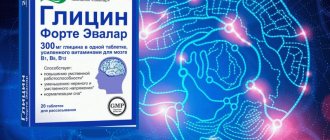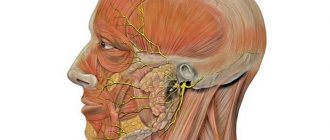Human perceptions are classified according to different criteria. Perception always includes several heterogeneous sensations. Depending on which type of sensation predominates, perceptions are divided into visual, auditory, tactile, olfactory, etc.
Objects perceived by humans exist in space, time and motion. This allows us to distinguish between the perception of space, the perception of time and the perception of motion.
Bearing in mind the uniqueness of the objects to which our perception is directed, we can especially talk about the perception of real objects, the perception of their images in the form of a drawing, a geographical map, etc., and the perception of oral and written speech. Currently, the question of the peculiarities of human perception by humans is being specially studied.
The process of perception varies in degree of activity. Therefore, a distinction is made between involuntary and voluntary perception (observation).
Perception of space. The perception of space is a reflection of the objective spatial properties and relationships of objects; it is a prerequisite for a person’s practical orientation in the world around him.
The spatial properties and relationships of objects include their size, shape, relief (volume), spatial relationship of parts of the object (proportions), distance, position and direction in the arrangement of objects in relation to the observer and in relation to each other.
The perception of space is a complex process of reflection, which includes different types of sensations - visual, auditory, tactile, motor, and sometimes olfactory. We can perceive the spatial relationships of objects not only through vision and touch, but also through hearing and smell. Thus, by the sound of a stone falling from a mountain, one can determine the distance and direction from us of the place of its fall and the approximate size of the stone. By smell we can often indicate the direction and even the distance from us to the smelling object. The degree of participation of one or another type of sensation in perception is different and depends on specific conditions. When navigating in space in the light, we rely primarily on the data of visual sensations, in the dark - on the data of tactile and auditory sensations.
The physiological basis of the perception of space is a system of interanalyzer connections in the cerebral cortex, which necessarily includes connections with the motor analyzer (turning the head in the direction of an object or sound, joint eye movements and muscle contractions in each eye when perceiving the size, shape and distance of objects, coordinated movements of hands and fingers when feeling an object, etc.). Research by Soviet scientists B. G. Ananyev and his collaborators has established that the perception of space depends on the paired work of the cerebral hemispheres. This is especially noticeable in the activity of analyzers with paired receptors: visual, auditory, olfactory and tactile. Correct orientation in space and adequate reflection of the spatial properties of objects are possible only with continuous information to the cortex from the receptors and organs of movement about the results of each reflex act.
Perception of the size and distance of objects. Visual perception of the size of an object arises as a result of the formation of a conditioned reflex connection between the size of the image of an object on the retina and a certain tension in the external and internal muscles of the eye during convergence and accommodation.
Connections between the retinal image and the tension of the muscular system of the eyes are formed in childhood, when the child adapts his vision to seeing objects in different conditions. They are repeatedly reinforced by the child’s tactile sensations. Subsequently, the perception of magnitude is possible without reinforcement, only through vision. In this case, the person ceases to clearly feel the tension and relaxation of the eye muscles.
The perception of the size of an object is associated with the perception of its remoteness. The closer an object is to the eyes, the larger its image on the retina and the stronger the tension in the eye muscles. As the object moves away from the observer, the retinal image decreases and muscle tension weakens. Therefore, an increase in convergence and accommodation becomes a signal of the proximity of an object, and their weakening becomes a signal of distance. The formed connection becomes so strong during life that its artificial disruption leads to errors in the perception of magnitude. Thus, in a special experiment, enhanced impulses from the eye muscles were artificially induced in subjects by injection of atropine at the moment of visual perception. As a result, the subjects saw all objects reduced in size. And, conversely, when muscle impulses from the eyes were artificially weakened by the introduction of another substance (pilocarpine), the subjects saw all objects enlarged. The disruption of habitual communication led to errors of perception (research by E. N. Sokolov).
The mechanism of convergence and accommodation operates only over short distances. When an object is far away, its size is assessed by comparison with the size of familiar objects among which it is located, and by some other signs (by the prospective decrease in the apparent size of objects as they move away, by the clarity of the contours of objects, by changes in the color of objects at a distance, by blocking one object with another, etc.) -
The accuracy of estimates of the size of objects at a large distance depends on a person’s practical experience in determining distances “by eye.” If there is no such experience, illusions and errors of perception arise. It is known that the inhabitants of the steppes, once in the mountains, underestimate the distance from themselves to the nearest mountains and thereby underestimate their true height. In this case, the mountaineers are less likely to make mistakes. A high-flying airplane seems to us much smaller than its size, although we make adjustments for distance. This error does not happen to people who have seen the plane up close.
Fig. 13 parallelogram illusion
Errors are also observed when estimating the size of individual parts within the whole object. The diagonals AP and RO are identical in length in Fig. We perceive 13 as different because they belong to parallelograms of different areas. To detect an error, you need to abstract from the whole and compare the length of the lines independently of it. The illusion can also arise due to contrast: the middle circles in Fig. The 14 appear different in size due to the contrast with the surrounding circles. Exercises have a positive effect on the accuracy of estimating the size of objects.
Fig. 14 illusion of contrast
Perception - what is it?
This term is defined by psychology, since the results of mental activity are in its field of study. Perception, or perception, is a concept that denotes the process of a person’s formation of a holistic image of a certain object or phenomenon, as a result of its direct influence on the senses, followed by analysis of the data obtained. It is the most important tool for understanding the surrounding reality and adapting to it.
For example, when meeting an apricot for the first time, a person, having completed its visual perception, will try what it feels like to the touch, evaluate its weight, shape, taste, and get a complete picture of it. Having information about its benefits and chemical composition, having analyzed the experience gained in getting to know this fruit, it becomes possible to create a ready-made, full-fledged image of it. In the future, this facilitates the processes of recognition, comparison and evaluation of objects with an already formed understanding of what they should be.
Research Links
- Graphical Perception: Theory, Experimentation, and the Application to the Development of Graphical Methods. William Cleveland, Robert McGill, 1984.
- Crowdsourcing Graphical Perception: Using Mechanical Turk to Assess Visualization Design. Jeffrey Heer and Michael Bostock, 2010.
- Serial processing and the parallel-lines illusion: Length contrast through relative spatial separation of contours. Kevin Jordan and Diane Schiano, 1986.
- Perceptual and conceptual factors in distortion in memory for graphs and maps. Barbara Tversky and Diane Schiano, 1989.
- Structure and strategy in encoding simplified graphs. Diane Schiano and Barbara Tversky, 1992.
- Graphic comparisons by bars, squares, circles and cubes. Frederick Croxton, 1932.
- The relative merits of circles and bars for representing component parts. Walter Crosby Eells, 1926.
- Bar charts versus circle diagrams. Frederick Croxton and Roy Stryker, 1927.
- An Information-Processing Analysis of Graph Perception. David Simkin and Reid Hastie, 1987.
- Displaying proportions and percentages. Ian Spence and Stephan Lewandowsky, 1991.
- Judging Proportion in Graphs: The Summation Model. JG Hollands and Ian Spence, 1998.
- Bars and Lines: A Study of Graphic Communication. Jeff Zacks and Barbara Tversky, 1997.
- Bar and Line Graph Comprehension: An Interaction of Top-Down and Bottom-Up Processes. Priti Shah and Eric Freedman, 2009.
- Judgments of Change and Proportion in Graphical Perception. JG Hollands and Ian Spence, 1992.
- Mapping conceptual to spatial relations in visual reasoning. Merideth Gattis and Keith Holyoak, 1996.
- Stimulus complexity and information integration in the spontaneous interpretation of line graphs. C. Melody Carswell, Cathy Emery and Andrea Lonon, 1993.
- The use or misuse of three-dimensional graphs to represent lower-dimensional data. Michael Siegrist, 1996.
- Gratuitous graphics: Putting preferences in perspective. Ellen Levy, Jeff Zacks, Barbara Tversky and Diane Schiano, 1996.
- Visual Psychophysics of Simple Graphical Elements. Ian Spence, 1990.
- The apparent and effective dimensionality of representations of objects. Ian Spence, 2004.
- Variables on scatterplots look more highly correlated when the scales are increased. William Cleveland, Persi Diaconis and Robert McGill, 1982.
- Discriminating Strata in Scatterplots. Stephan Lewandowsky and Ian Spence, 1989.
- Learning Perceptual Kernels for Visualization Design. Cagatay Demiralp, Michael Bernstein and Jeffrey Heer, 2014.
- The Shaping of Information by Visual Metaphors. Caroline Ziemkiewicz and Robert Kosara, 2008.
- Perceptual Guidelines for Creating Rectangular Treemaps. Nicholas Kong, Jeffrey Heer, and Maneesh Agrawala, 2010.
- A Comparison of 2-D Visualizations of Hierarchies. Todd Barlow and Padraic Neville, 2001.
- The effect of aesthetics on the usability of data visualization. Nick Cawthon and Andrew Vande Moere, 2007.
- Ranking Visualizations of Correlation Using Weber's Law. Lane Harrison, Fumeng Yang, Steven Franconeri and Remco Chang, 2014.
- Beyond Weber's Law: A Second Look at Ranking Visualizations of Correlation. Matthew Kay and Jeffrey Heer, 2020.
- Sizing the Horizon: The Effects of Chart Size and Layering on the Graphical Perception of Time Series Visualizations. Jeffrey Heer, Nicholas Kong and Maneesh Agrawala, 2009.
- ISOTYPE Visualization - Working Memory, Performance, and Engagement with Pictographs. Steve Haroz, Robert Kosara and Steven Franconeri, 2020.
- How well do line drawings depict shape? Forrester Cole et. all, 2009.
- How Visualization Layout Relates to Locus of Control and Other Personality Factors. Caroline Ziemkiewicz et. all, 2012.
- How do People Make Sense of Unfamiliar Visualizations?: A Grounded Model of Novice's Information Visualization Sensemaking. Sukwon Lee et. all, 2020.
- Influencing Visual Judgment through Affective Priming. Lane Harrison et. all, 2013.
- The Impact of Social Information on Visual Judgments. Jessica Hullman, Eytan Adar and Priti Shah, 2011.
- The Effects of Interactive Latency on Exploratory Visual Analysis. Zhicheng Liu and Jeffrey Heer, 2014.
- Perception of Elementary Graphical Elements in Tabletop and Multi-Surface Environments. Daniel Wigdor et. all, 2007.
- Effectiveness of Animation in Trend Visualization. George Robertson et. all, 2008.
- Selecting Semantically-Resonant Colors for Data Visualization. Sharon Lin et. all, 2013.
Subscribe to Designer Digest. This is the editor-in-chief's weekly newsletter with the best links for graphic designers.
The difference between perception and sensation
For a deep understanding of mental processes, it is important to understand the terms and their relationships. Sensation and perception are often confused, but now it will become clear that they are not the same thing at all:
- Information received from one sense organ is a sensation. Perception includes experience gained from several analyzers.
- The sensation gives rise to some kind of feeling - heaviness, sweetness, coldness. Perception ends with the formation of a holistic image.
- Thanks to sensations, we assimilate individual characteristics of objects and phenomena. Perception paints a complete picture of them in our minds.
- All living organisms have sensations, that is, the ability to perceive objects through receptors. The development of perception is accessible only to creatures with a complex nervous system and perceptual psyche.
- As a conclusion, perception is carried out by receiving all possible sensations from contact with an object or phenomenon, but is not reduced to their sum. To be considered perceived, the information received must still be analyzed and compiled into a single representation - an image.
Psychophysiology of perception
Main article: Psychophysiology of perception
| This section needs to be completely rewritten. There may be explanations on the talk page. |
The science that studies the physiological mechanisms of perception is the psychophysiology of perception, which is one of the areas of theoretical psychophysiology.[10] A person’s perception of the world is carried out through his sensory systems, while a flow of information is processed, the speed of which is about 11 million bits per second.[11]
Perceptions arise as a result of processing sensory information from which semantic, pragmatic and other information is extracted (formed). If the formed perceptions (semantic contents) are not strong enough to reach consciousness (so-called subliminal (subliminal) perceptions), they can be stored in the personal unconscious [12], from which they can later be extracted into the area of consciousness, for example using hypnosis.
Visual perception of the world
See also: Psychology of space perception
Visual perception of the world is carried out through the visual system, and although the visual picture of the world seems integral, it is assembled from the results of the nervous activity of several dozen interacting areas of the brain, specialized for the implementation of specific aspects of vision. By 2000, more than 30 cortical areas had been identified that were connected to the eyes through visual area V1 and had specific visual processing functions.[13] When forming a visual picture of the world, the human visual system processes an information flow of 10 million bits per second.[11]
Perception of visual and spatial information
Main article: Hypothesis of two streams of visual information processing
Visual and spatial information is isolated from visual information located in sensory iconic memory (see memory), recognition systems - “what” (along the ventral path) and localization - “where” (along the dorsal path) semantic information is revealed: visual about the properties of objects (about the shape, color and distribution of objects) and spatial (about the location and movement of objects).[14][15]
Face perception
Main article: Face perception
From birth, infants are interested in human faces, but have a very rough model of the face and therefore look at almost any round object that has two “eyes” and a “mouth” and is located at a distance of approximately 20 cm [15]. By four or five months, children begin to confidently distinguish faces from other objects. This is likely due to the development of the fusiform (fusiform) gyrus, a region on the border between the occipital and temporal lobes, the ventral surface of which is specialized for face recognition [16]. Apparently, activation of the fusiform gyrus occurs already in two-month-old infants. When this area is damaged, prosopagnosia occurs, a disorder of facial perception in which the ability to recognize faces is lost.
Processing and perception of visual information about a face is carried out by a distributed system consisting of several areas of the brain [17]. The core of this system consists of: an area in the inferior occipital gyrus (OFA)[18], which provides the initial analysis of individual parts of the face; an area in the fusiform gyrus (FFA), which analyzes invariant facial characteristics and ensures recognition of a person by face [19]; an area in the posterior part of the superior temporal sulcus (pSTS), activated when analyzing variable aspects - facial expression, lip movements during speech and gaze direction [20]. In the extended system, further analysis of the direction of gaze (interparietal sulcus - IPS), semantics (inferior frontal gyrus - IFG, anterior temporal cortex - ATC), emotional component (amygdala - Amy, insular cortex - Ins), biographical (precuneus - PreCun, posterior cingulate gyrus - pCiG) and other information. Associated with object perception, the lateral occipital cortex (LOC) may be involved in early analysis of facial image structure. At the same time, the identification of various aspects of visual information about a face is carried out not by the autonomous work of individual areas of the brain that implement specific functions, but by their interconnected coordinated work [21].
Not all information associated with the perception of faces can reach consciousness. Thus, studies conducted in 2004 and 2006 showed that patients who were exposed to fearful faces of representatives of other races had an increase in activity of the amygdala, while information about the emotions of the faces in the shown pictures did not reach the level of consciousness [22][ 23].
Speech perception
The acquisition and understanding of written and spoken language is carried out by a part of the cerebral cortex called Wernicke's area. [ source not specified 314 days
]One of the most popular models of natural text reading by a person at an average speed for whole words is EZ Reader, developed on the basis of the principles of cognitive psychology. [
source not specified 314 days
]
Direct perception of mathematical properties and relationships
The perception of people and higher animals includes the function of directly determining various mathematical properties and relationships, including quantitative ones.[15]
Humans and animals have a direct perception of multiplicity, allowing them to almost instantly compare the sizes of different groups of objects, just as infants have the ability to determine the ratio of the sizes of groups without calculations when the number of objects in them is 1:2. Adults can define more complex 7:8 ratios. Another universal perceptual ability is subitization, the ability to instantly determine the number of objects in small groups (up to four).
fMRI studies show that quantitative values activate areas located in the frontal and posterior parietal lobes of the brain. One of the key places is the intraparietal sulcus, where the semantic meaning of numbers is represented. In people suffering from dyscalculia, the inability to learn arithmetic, this part of the brain is smaller than in healthy people and is not active enough.
There is an assumption that in the brain the image of a set of numbers is represented as a straight line, the points of which correspond to numbers in ascending order. Because of this, the response time of "which number is greater" for close numbers (such as 7 and 8) takes longer than for those whose difference is large (8 and 2).
There is information that some reindeer herders can instantly determine the loss of several heads in one and a half to two thousand reindeer herds. However, they did not have the skills to count large quantities.
The first systematic studies of the development of direct perception of mathematical characteristics, as part of the study of the development of general cognitive abilities of children, were carried out by the French psychologist Piaget.
Properties of perception in psychology
Studying their characteristics helps to better understand concepts. In psychology it is generally accepted that the properties of perception are:
- Objectivity
. The totality of sensations we receive does not exist chaotically in space, but is tied by our consciousness to specific objects of the external world. - Integrity and structure
. The individual characteristics of an already perceived object are structurally connected with each other so strongly that even after interacting with one of them, a complete image of the object emerges in the mind. - Consistency
. Once perceived, an object retains its characteristics in our consciousness, even if we subsequently observe it in a distorted form. - Meaningfulness
. What is perception without thinking involved? Just a set of receptor reactions to external stimuli. It is possible to classify an object and form a basic understanding of its properties only by applying analytical skills and existing experience. - Selectivity
. The human psyche cannot cope with simultaneously qualitatively perceiving several objects, therefore, when we carefully look at something new and interesting, the rest of the world seems to cease to exist for a while.
Principles of perception
Once you see optical illusions, you are no longer sure how accurately your brain processes information about the surrounding reality. It is easy to explain the success of such tricks if you know the long-studied principles or laws of perception:
- Grouping
. The mind continuously strives to establish correlations between perceived objects. It automatically classifies objects located nearby, moving in the same direction, or similar in shape or other characteristics to one group and links them into one class. - Isolating background and figure
. If attention is directed to a specific object, then everything that surrounds it is perceived by the brain as a background. As soon as you shift your focus to something else, the recent object of knowledge will instantly merge with the background environment. - Completion
. This principle manifests itself in the fact that our consciousness strives to complement the missing fragments in the perceived object in order to obtain a complete image.
Colors
In another study I love, Lin et al created an algorithm to identify “semantically resonant colors.”
For example, if I want to talk about the ocean I use blue, if I want to talk about love I use pink or red. The algorithm analyzed Google Images and assigned colors to keywords. Then, with the help of participants on Mechanical Turk, the researchers tested whether the program worked effectively. Some of the results were funny.
Under the letter A are the colors that the algorithm selected for the keywords, under the letter T are the colors that users chose. The number in brackets shows how accurately the algorithm worked (you can score a maximum of 5 points)
For the next experiment, a Tableau artist designed a semantically resonant color scheme, and the researchers tested whose scheme (a human's or an algorithm's) would be more effective. They bet against their own program, hypothesizing that a human-selected palette would perform better.
Colors selected by algorithm (A) and expert (E)
In a second experiment, the researchers assessed how well participants performed simple comparison tasks using three different color palettes. It turned out that the colors selected by the algorithm were not inferior to the expert’s palette.
Channels of perception
Data about the world around us continuously enters our consciousness. They are captured and delivered to the necessary parts of the brain, passing through the following channels of information perception:
- Visual
. Everything that we perceive with our visual organs is visual information. - Auditory
. Data perceived by ear, that is, all the sounds around us. - Kinesthetic
. This channel combines sensations such as taste, smell, touch, meta-sensations (our internal reactions and emotions from interaction with external objects).
Perception factors
Why do people who have the same channels of perception and information processing mechanisms see the same reality so differently? Differences and features of perception are caused by external and internal factors that affect our ability to understand the world. External ones include:
- Repeatability
: images of frequently encountered objects are formed in the mind more complete. - Intensity of influence
: a strong effect on receptors or provocation of strong emotions is what accelerates perception. - Contrast
: objects or phenomena that stand out from the general mass are better remembered and more readily analyzed by our brain. - Movement
: static and dynamic objects are perceived differently, and to get a complete picture of an object, it is advisable to observe it in all states.
What is subjective perception and what internal factors influence it? Three principles have been derived that explain the selectivity of the brain during cognition of reality:
- Resonance
: consists in the fact that phenomena that are in our sphere of interest are perceived more readily than others. - Alertness
: something that threatens personal safety instantly comes into focus, in contrast to neutral objects. - Defenses
: the brain protects its beliefs, therefore it resists the perception of any information that contradicts them.
Types of perception
In addition to external and internal factors, the process of cognition is also influenced by individual characteristics of the psyche. Based on this, the following types of perception in psychology are distinguished:
- synthetic type;
- analytical type;
- analytical-synthetic type.
Synthetic type of perception
Perception in psychology is divided into types depending on the specificity of the human senses’ coverage of the characteristics of the object being studied. Synthetic perception is characterized by little attention to detail, but a clear awareness of the overall picture, an understanding of the main essence of events. People who are prone to this type of perception do not tend to delve into the subtleties of everything that happens; they are content with a generalized vision.
Analytical type of perception
Synthetic perception, as an extreme, also has its antipode. The analytical type is just such a perception in psychology that is characterized by excessive attention to detail, the opposite of generalization. Having a penchant for it, it can be difficult to grasp and analyze the general idea of the events taking place, but not a single detail of the surrounding reality will be left unattended.
Analytical-synthetic type of perception
Just as there are no pure types of temperament, so types of perception are rarely found in such a refined, one-sided form. The classification of perception is very arbitrary, because each of us has inclinations towards both of the above types, except that one of them may predominate. Trying to analyze the particular, we strive to create a general picture, and having received a general idea, we break it into fragments for a more complete understanding.
Levels of perception
The process of cognition of an object takes place in several stages. The structure of perception is due to several levels of information processing in our brain. There are four in total:
- Detection
. At this stage, only the fact of irritation of receptors during interaction with an object is recorded by consciousness. - Discrimination
. Now the brain receives signals from analyzers about what qualities the perceived object has. - Identification
. Having received information about the properties of an object, consciousness correlates them with the properties of other objects, the images of which are stored in its memory. - Identification
. Having analyzed its past experience and new data, the brain assigns a new object to the groups and categories at its disposal. Recognition and classification of an object means that such perception was successful.
Perception of the shape of objects and relief (volume).
The skin, motor and visual analyzers take part in the perception of the shape of small objects. When the sense of touch is turned off, the eyes perform the function of a palpating hand: a person traces the contours of an object with his gaze, which serves as a signal of its shape (round, quadrangular, etc.). The accuracy of perceiving the shape of an object at a distance depends on the severity of its contours, and the clarity of the contours in turn depends on the size, distance and illumination of the object, as well as on a person’s prior familiarity with this shape and on the acuity of his vision. Visual acuity is characterized by the minimum distance at which we see two points as separate. It is considered normal if a person distinguishes two points visible from a viewing angle in G.
The accuracy of perception of the planar shape of objects is important when perceiving geometric figures, drawings, numbers, letters, silhouette drawings, etc. To correctly perceive letters and numbers, it is necessary not only to remember their outline well, but also their position on the plane.
By changing the position of a letter or number, you can get a different sign. Thus, an inverted “6” gives the number “9”, and inverted letters “t”, “ts” can be perceived as “w”, “p”, etc. In preschoolers and first-graders, cases of mirror and inverted writing are common. This fact suggests that their perception of shape is not yet associated with a certain position of the object in space.
Direct perception of a three-dimensional form, or relief, occurs through active touch, in which the skin and motor analyzers take part. To perceive a three-dimensional form at a distance, binocular vision is of primary importance. With binocular vision, a fusion of excitations coming from the retinas of each eye occurs in the cerebral cortex. This merger can be complete or incomplete. Complete fusion of excitations is observed in cases when images of an object fall on the corresponding (corresponding) points of the retinas, i.e., on points that completely coincide when the retinas are superimposed on each other. Incomplete fusion occurs when images fall on inappropriate (disparate) points. If the discrepancy is large, the impression of doubling of objects arises, but if it is small, the impression of volume arises. This can be verified by two simple experiments. We will hold two pencils vertically directly in front of us strictly in the same plane, but the first is closer to the eyes, and the second is further away. If you look at the nearest pencil, it seems that the second one is double; If you look at the far pencil, the near one appears double. This means that from all points of the pencil fixed by the gaze, the image falls on the corresponding points of the retinas, and the image from the second pencil, not fixed by the gaze, falls on the inappropriate points of the retinas. It gives the impression of doubling.
Now let's make a second experiment. Let's look at a closed thick book from the spine, holding it vertically in front of us. If you close your left eye, the right plane of the book is visible better than the left; If you close your right eye, on the contrary, the left plane is more visible than the right. When looking with two eyes, we immediately see both planes and, moreover, we clearly see the volume, the physicality of the book. This is explained by the fact that images from two planes of the book now fall on disparate points of the retinas, but this disparity is not very large.
In binocular vision, convergence occurs; the gaze stops either at the near or at the distant part of the volumetric body. Nerve impulses from contractions of the eye muscles are associated with excitation coming from the retina and serve as volumetric signals.
At a far distance or with monocular vision, direct perception of three-dimensionality becomes impossible. In this case, a person judges the volume, as well as the distance of an object, by the indirect signs discussed above.
Errors of perception
Our cognitive abilities are not perfect and are often influenced by various factors. Behavioral psychologists have experimentally identified several of the most common perceptual errors:
- Halo effect
. It consists in the fact that our already formed attitude towards some quality of an object or person determines the attitude towards it as a whole, even if its other characteristics would cause completely different emotions. - The effect of prejudice
. This disturbance of perception manifests itself in the selective blindness of our consciousness regarding the information that can destroy already established stereotypes. - Availability effect
. If examples of certain phenomena easily come to mind, then we automatically consider them common, even if statistics say otherwise. - Projection effect
. We readily attribute our own characteristics to other people. Such perceptual effects often lead to disappointment.
Illusions of perception
Sometimes, when various sensations accumulate, some of them may become distorted in our consciousness under the influence of others. Such illusions of perception in psychology are not considered something negative; rather, on the contrary, they are explainable effects in which patterns can be found. Distortions can occur in any sense organs and are, for example:
- Optical
. The organs of vision are easy to deceive; they succumb to illusions from the refraction of sunlight, make mistakes in perceiving the size of objects depending on their surroundings, and can perceive the same color differently, but against different backgrounds. - Flavoring
. Sweet fructose imparts bitterness to neutral-tasting water, which is explained by the unexpected effect of such a tandem on the receptors. - Proprioceptive
. These are illusions of perception of reality by the muscular system: for example, when transport suddenly stops, our body continues to feel it moving.
Development of perception in children
In development, children's perception has specific features. From birth, he already has some information. The further development of this process is the result of the child’s personal activity. How active he is, how quickly he develops, gets acquainted with various objects and people.
Parents can control their children's perceptions in the future. The early development of the properties of perception occurs as the child grows up; it manifests itself in the peculiarity that for the perceiving child the shape of an object becomes significant, it gains meaning. In infancy, recognition of people and objects around a person develops, and the number of purposeful, conscious body movements increases. Such activity in the development of perception occurs before primary school age.
It is very important that before this time a study is carried out for possible perception disorders. The reason for the anomaly in the development of an understanding of reality may be in the disconnection of the sensory systems and brain centers to which the signal is received
This could happen in case of injury or morphological changes in the body.
The perception of children of primary school age is expressed by vagueness and indistinctness. For example, children do not recognize people dressed in costumes at holidays, even though their faces may be open. If children see a picture of an unfamiliar object, they select one element from this image, based on which they comprehend the entire object. This understanding is called syncretism, it is inherent in children's perception.
In middle preschool age, ideas about the relationship between the sizes of objects appear. The child can judge familiar things as large or small, regardless of their relationship to other objects. This is observed in the child’s ability to arrange toys “according to height.”
Children of senior preschool age already have an understanding of the measurements of the size of objects: width, length, height, space. They are able to distinguish the location of objects among themselves (top, bottom, left, right, and so on).
The child’s productive activity lies in his ability to perceive and reproduce the features of objects, their color, size, shape, location
At the same time, it is important to assimilate sensory standards and also develop special perception actions
The perception of works of art by children of senior preschool age expresses the unity of experience and cognition. The child learns to capture the image and perceive the feelings that excite the author.
The peculiarity of the child’s perception of the people around him is revealed in value judgments. The highest and brightest assessment is attributed to those adults who have a close connection with the child.
The perception and evaluation of other children depends on the child's popularity in the group. The higher the child's position, the higher the rating assigned to him.
The development of perception in preschool children is a complex, multifaceted process that helps the child learn to more accurately reflect the world around him, be able to distinguish the features of reality and be able to successfully adapt to it.
Theories of perception
In the scientific community, discussions have continued for many decades about the mechanisms that ensure the reflection of objective reality in human consciousness. There are several theories that describe this process in their own way:
- Structuralism
. The original theory that reduces perception to the sum of sensations received from an object and comparison with previously gained experience. - Gestalt theory
. He criticizes structuralism, arguing that perception is a more complex process, since not only private sensations form an image, but also the formed image influences the received sensations.
Person's perception by person
In addition to knowledge of surrounding objects and phenomena, it is important for people, as social beings, to be able to form an impression about others. Interpersonal perception is much more complex and complex than the perception of inanimate objects. Initially, the idea is formed based on visual data, by analyzing the details of appearance: neatness, style, characteristic facial features and physique, which are compared with existing stereotypes.
Later, in the process of communication, it becomes obvious that such superficial perceptions are not reliable. It is supplemented with information about belonging to a social group (with the transfer of all the stereotypical qualities of representatives of this group to a new acquaintance), interests, abilities and character. Sensitivity to the emotional states of your interlocutor will also help to make his image more complete and interact with him more effectively.
Visual perception
It is carried out through the organs of vision. When building an image of an object, a person takes into account its color, shades, the ratio of light and darkness, and brightness. Binary vision (vision with two eyes) helps to determine the distance of an object and the speed of its movement, the location of objects relative to each other, the trajectory of their movement, whether objects are flat or three-dimensional.
The size of an object is determined by the ratio of its size on the retina and its distance from the observer’s eyes. This unique ability of the visual organs is due to convergence.
Convergence is the convergence of the visual axes of the eyes on an object. Based on the angle formed between the visual axes, the brain determines the distance to the object. If an object is moving, by changes in angle you can find out its speed of movement and predict its trajectory. The direction of movement is determined by the movement of the reflection of the object along the retina of the eye.
A person visually evaluates the emotions of another person or animal to make inferences about his intentions. Visual perception is one of the most important analyzers responsible for creating an image.











